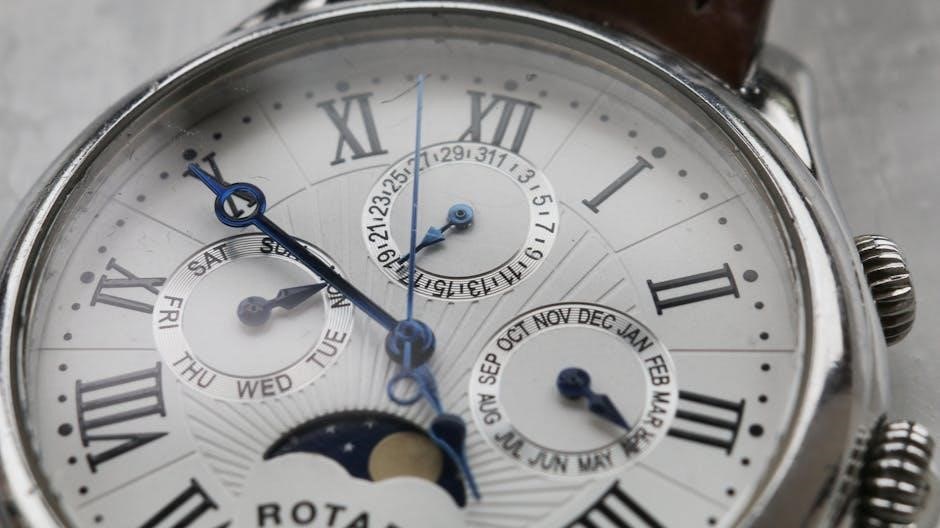The introduction to Second Suite in F PDF is a musical composition by Gustav Holst, available for download and print in PDF or MIDI format, featuring four movements and various instruments, including trombone and cornet.
Overview of the Composition
The Second Suite in F is a renowned musical composition, with a rich history and significance in the world of music. It is a suite of four movements, each with its own unique character and charm. The composition is scored for military band, and features a wide range of instruments, including brass, woodwinds, and percussion. The suite is known for its beautiful melodies, intricate harmonies, and complex rhythms, making it a challenging and rewarding work to perform. According to historical records, the Second Suite in F was composed by Gustav Holst, a British composer, in the early 20th century. The composition has been widely performed and admired, and is considered one of the most important works in the repertoire of military band music. The suite’s movements are designed to showcase the technical and musical abilities of the performers, and to evoke a sense of emotion and drama in the audience. Overall, the Second Suite in F is a masterpiece of musical composition, and continues to be celebrated and enjoyed by music lovers around the world. The composition’s beauty and complexity make it a timeless classic, and its influence can still be heard in music today. With its rich history and cultural significance, the Second Suite in F remains an essential part of musical heritage.
Structure and Movements
The Second Suite in F is composed of four distinct movements, each with its own unique structure and character. The movements are designed to showcase the technical and musical abilities of the performers, and to evoke a sense of emotion and drama in the audience. The first movement is a march, featuring a strong and energetic rhythm, while the second movement is a beautiful and melancholic folk song. The third movement is a lively and intricate song without words, and the fourth movement is a grand and ceremonial finale. The movements are carefully crafted to flow seamlessly into one another, creating a sense of continuity and cohesion throughout the suite. The structure of the suite is designed to build tension and release, with each movement contributing to the overall dramatic arc of the work. The use of different musical themes and motifs adds depth and complexity to the suite, making it a rich and rewarding work to perform and listen to. The movements work together to create a sense of narrative and emotional progression.

Arrangements and Transcriptions

Arrangements and transcriptions of Second Suite in F are available for various instruments and ensembles, including trombone, cornet, and euphonium, in PDF and MIDI formats, online now easily;
Instrumental Arrangements
Instrumental arrangements of the Second Suite in F are diverse and cater to various ensembles, including military bands, marching bands, and mixed ensembles. The arrangements feature a range of instruments, such as trombone, cornet, euphonium, and tuba. These arrangements are available in PDF and MIDI formats, allowing for easy download and printing. The instrumental arrangements are suitable for different skill levels, from beginner to advanced, making them accessible to a wide range of musicians. Some arrangements are specifically designed for solo instruments, while others are scored for larger ensembles. The availability of these instrumental arrangements has made the Second Suite in F a popular choice for performances and rehearsals. Musicians can explore different arrangements to find the one that suits their needs and preferences. Overall, the instrumental arrangements of the Second Suite in F offer a rich and varied musical experience. They can be used in various settings, including concerts, festivals, and educational institutions.
Solo Arrangements
Solo arrangements of the Second Suite in F are ideal for individual musicians looking to perform the piece. These arrangements are available for various instruments, including euphonium, and are designed to showcase the musician’s skill and expression. The solo arrangements are often more challenging than the instrumental arrangements, requiring a higher level of technical proficiency and musicality. They are suitable for advanced musicians who want to push their skills to the next level. Some solo arrangements are specifically designed for competitions or auditions, while others are intended for recitals or concerts. The solo arrangements of the Second Suite in F can be downloaded and printed in PDF or MIDI format, making it easy for musicians to access and practice the music. Overall, the solo arrangements offer a unique and rewarding musical experience for individual musicians. They provide an opportunity for musicians to develop their skills and showcase their talent. Musicians can choose from a variety of solo arrangements to find the one that suits their needs and preferences.

Sheet Music and Scores
Sheet music and scores for Second Suite in F are available online in PDF format for download and printing purposes, featuring detailed musical notations and compositions by Gustav Holst always.
PDF and MIDI Downloads
PDF and MIDI downloads of the Second Suite in F are widely available online, allowing users to access and print the sheet music with ease. These digital formats enable musicians to practice and perform the composition with precision and clarity. The PDF files typically include detailed musical notations, while the MIDI files provide a digital representation of the music that can be played back using software or hardware devices. Many websites offer free downloads of the Second Suite in F in PDF and MIDI formats, making it accessible to a wide range of musicians and music enthusiasts. Additionally, some websites may offer paid downloads or subscriptions that provide access to a wider range of musical compositions, including the Second Suite in F. Overall, the availability of PDF and MIDI downloads has made it easier for people to engage with and enjoy the music of Gustav Holst. The downloads are convenient and user-friendly, making it possible for anyone to explore and appreciate the beauty of the Second Suite in F. With the help of technology, the music of Gustav Holst can be enjoyed by people all over the world. Musicians can download and print the sheet music, and then practice and perform the composition with confidence and precision.
Score Ratings and Reviews
Score ratings and reviews play a crucial role in helping musicians and music enthusiasts find suitable sheet music for the Second Suite in F. Many websites that offer PDF and MIDI downloads of the composition also feature rating systems, allowing users to rate and review the scores. These ratings and reviews provide valuable feedback and insights, helping others to determine the quality and accuracy of the sheet music. The reviews often include comments on the clarity and readability of the scores, as well as the overall difficulty level of the composition. By reading the reviews and checking the ratings, users can make informed decisions about which version of the Second Suite in F to download and use. This helps to ensure that they find a high-quality score that meets their needs and abilities. The score ratings and reviews are an essential resource for musicians, and they help to build a community of music lovers who can share and discuss their experiences with the Second Suite in F. The feedback and ratings also help to improve the quality of the sheet music, as arrangers and publishers take note of the comments and make adjustments accordingly.

Performance and Interpretation
Musicians interpret the Second Suite in F with expression and technique, using PDF scores as guidance for performances and recordings, enhancing overall musicality and sound quality naturally.
Conducting and Performance Tips
Conductors and musicians can benefit from various tips when performing the Second Suite in F. The score requires attention to detail and expression, with a focus on balance and harmony. A thorough understanding of the composition’s structure and movements is essential for a successful performance. Using PDF scores, musicians can practice and rehearse with precision, ensuring a polished and engaging performance. Additionally, considering the historical context and significance of the piece can enhance the interpretation and overall sound quality. By following these tips, conductors and musicians can deliver a captivating and memorable performance of the Second Suite in F, showcasing their skill and artistry. With careful preparation and attention to detail, the Second Suite in F can be a truly unforgettable musical experience, leaving a lasting impression on audiences and performers alike, and demonstrating the power of music to evoke emotions and inspire.
Historical Context and Significance
The Second Suite in F has a rich historical context, dating back to the early 20th century. Composed by Gustav Holst, the piece reflects the cultural and musical influences of the time. The suite’s four movements showcase a range of styles and moods, from the lively march to the poignant folk songs. The use of folk melodies and harmonies adds depth and complexity to the composition, making it a significant work in the classical music repertoire. The Second Suite in F has been performed and admired by audiences for generations, and its significance extends beyond its musical value to its role in shaping the course of classical music history. The piece has been widely acclaimed for its beauty, craftsmanship, and emotional resonance, and continues to be celebrated as a masterpiece of classical music, with its PDF scores and recordings remaining popular among music lovers today, and its influence still felt in modern music.
